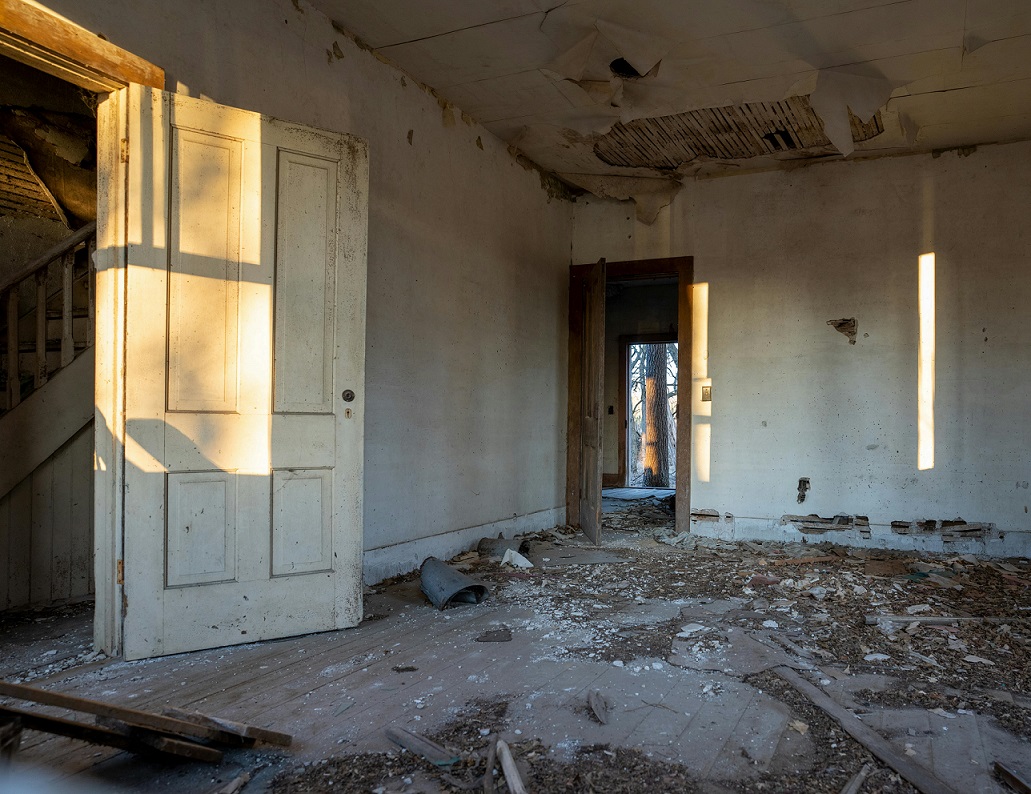Nov. 20, 2025

BY JOHN BAILEY
An abandoned house.
No walls in some places.
Holes in the floor.
A tarp for the roof.
But it’s the only place you can call home.
More than 11,600 individuals were homeless last year in North Carolina, according to data from the 2024 HUD Continuum of Care Homeless count. In Catawba County that number was 449, including 32 families with children the NC Point in Time count data said.
Hunger and Homelessness Awareness Week (held annually the week before Thanksgiving) is an annual outreach across the country to draw attention to these issues, and in Catawba County there are dozens of nonprofits and public agencies that work to help those facing housing insecurity. The Catawba County United Way recently talked to some of these nonprofits to learn more about their impact.

June 2024 - The Kindness Project – Hickory
“We got a call from someone who follows us on Facebook who lived next to an (empty) house where she noticed someone was living,” Kindness Project Vice President Amber Taylor said.
The neighbor, instead of calling the police about a trespasser, saw the chance to help another human being in need. She gave “Ms. C” water and food but didn’t know what else to do for her.
“That’s when she asked if we could speak to her and see if we could help,” Taylor said.
The Kindness Project assists those in crisis, hardship and poverty within the local community with the essential necessities for survival, while working with other local organizations to provide resources for those wanting to rebuild or transform their lives.
In the last three months, NC 211 – United Way of North Carolina’s community resource help line – recorded 29,192 requests for help with housing or shelter. Locally, 382 calls were made from Catawba County.
Ms. C had worked in Florida and moved around a lot and decided to split the cost of a hotel room with another couple when they got to North Carolina. Ms. C was drawing Social Security benefits.
“But she gave the money directly to the couple and they used the money on drugs, and they all eventually had to leave the hotel,” Taylor said.
Unfortunately, Ms. C’s benefits aren’t enough to cover all her living expenses. Taylor said other neighbors tried to help, but eventually she did have to leave the derelict house.
In the months that followed, the Kindness Project helped her move between temporary housing options—first a hotel, then local shelters—until she could secure stable housing.
One sad moment she had to deal with was giving up her pets when the Kindness Project moved her into a hotel. They were able to find new homes for all the pets, which did give Ms. C some peace of mind.
“That was hard for because they became a lifeline for her,” Taylor said.
When Section 8 housing applications opened in July of that year, the Kindness Project team helped Ms. C begin that process completing paperwork, gathering required documents and taking her to appointments. She received her housing voucher that fall.

“Then, just before Thanksgiving, we got the call we’d been waiting for—C had secured her very own apartment,” Taylor said. “Our team loaded up donated items and helped her move in, turning her new apartment into a warm and welcoming home.
“The lady who was near the abandoned house Ms. C was living in called us to find out if it was her and then went to Safe Harbor Resource Warehouse and bought her a dining room table.”
Taylor admitted it can be frustrating for agencies helping clients trying to navigate the system.
“Sometimes it’s just a communication barrier. Maybe their number changes every few months or their cell phone is active one week and the next week it gets cut off until they have money,” Taylor said.
“And a lot of times it’s about locating someone. They aren’t always easy to find, moving around from place to place. This is where agencies that have individuals who work in the field directly with the unhoused can have the greatest impact. They know how to get the word out into that community if they are trying to find someone.”
Today, Ms. C continues to thrive in her space. She regularly checks in with the Kindness Project team and volunteers at the agency’s community events. She even allowed another Kindness Project client who was struggling on the streets last winter to move in with her until it warmed back up.
“To actually see someone who we’ve helped go through this entire process of getting into housing gave us hope and faith too and encouraged us even more to advocate for some of the other people we’re trying to help, to make sure they get through the process and not get lost in it,” Taylor said.
Read more impact stories at THIS LINK.
